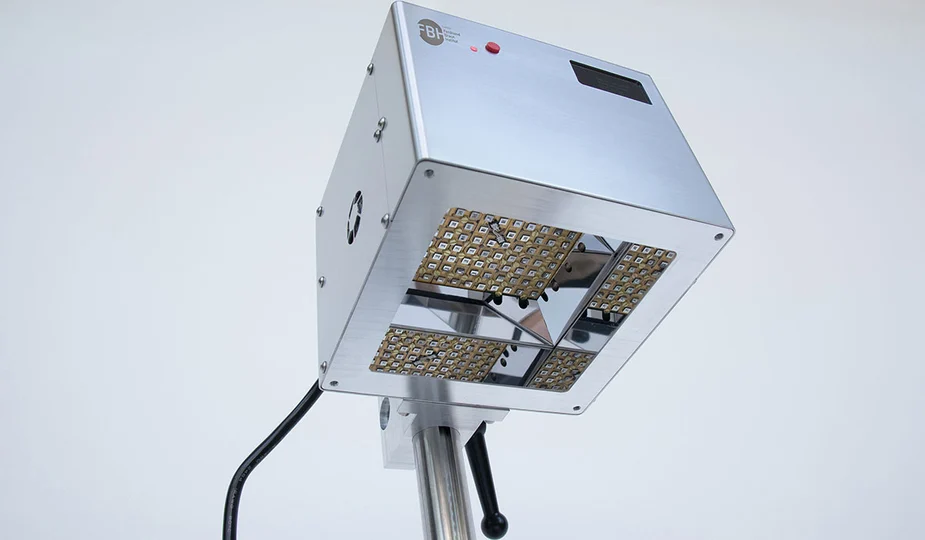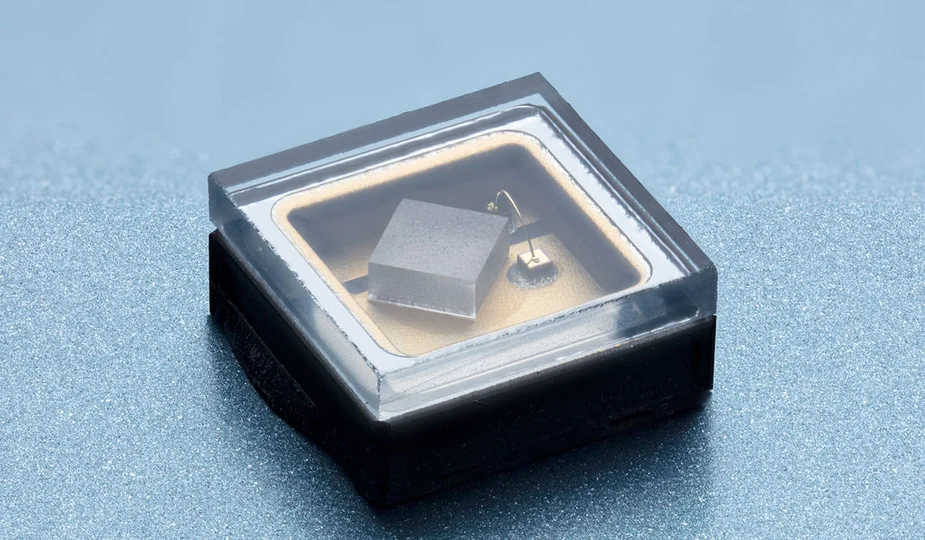FBH presents advances in UV LEDs towards application at ICULTA conference
From disinfection to use against pathogens on human skin
The Ferdinand-Braun-Institut (FBH) presents current research results at the virtual ICULTA 2021. In particular, the reliability of UVB and UVC LEDs has been significantly improved – an important step towards their commercial use. FBH will also show irradiation systems that are already being tested in medical applications, for example to combat multi-resistant pathogens on the skin.
UV LEDs can be used to inactivate viruses and bacteria, disinfect water and surfaces, or to change the properties of materials. Also, plants can be irradiated and enriched with health-promoting secondary plant substances. To take even better advantage of these potentials in the future, UV LEDs with high optical power and long lifetime are needed. The Ferdinand-Braun-Institut will present current developments and results at the "International Conference on UV LED Technologies & Applications – ICULTA 2021" from April 19 to 20, 2021. The institute participates with an invited talk and showcases at the accompanying exhibition, presenting its portfolio. The range extends from customized LEDs to ready-to-use prototypes that can be used for applications like surface disinfection. In particular, FBH reports important progress in the reliability of UVB and UVC LEDs.
Improved reliability of UVB and UVC LEDs
Up to now, the lifetime of state-of-the-art UVB and UVC LEDs has been limited to several thousand hours. At ICULTA, FBH presents a new understanding of degradation processes of UV LEDs. The degradation behavior was analyzed under different operating conditions, for different LED designs and material compositions. Based on the gained knowledge, FBH has derived a model for the physical degradation processes of UV LEDs. In collaboration with the TU Berlin, FBH has succeeded in increasing the lifetime of UVB LEDs and certain UVC LEDs to more than 10,000 hours – an important progress to ensure that the devices can be used in future commercial products. Together with its partner, FBH offers customized UV LEDs with specific wavelengths in the UVB and UVC spectral range. The portfolio also comprises customized packages that, for example, have monolithically integrated ESD protection or are equipped with micro-optics to adjust the emission angle.
UV LED emitters to fight pathogens – from surfaces to human skin
UVC light inactivates viruses, bacteria and fungi. FBH is developing the required LEDs jointly with TU Berlin, covering the entire value chain from semiconductor technology to ready-to-use prototypes. With its LEDs emitting in the far-UVC spectral range at 233 nm, the partners are even world leaders. Light of this wavelength offers the decisive advantage that it hardly penetrates the living layers of the skin. It is therefore predestined for use on humans. The Ferdinand-Braun-Institut has meanwhile developed and manufactured several UV LED irradiation systems using 233 nm LEDs. These are being tested in medical studies at the Charité - Universitätsmedizin Berlin and the Universitätsmedizin Greifswald. An array of 120 LEDs is integrated into each of the systems on an area of 8 cm x 8 cm. This achieves a maximum irradiance of 0.17 mW/cm2 with more than 90 % uniformity over an area of 6 cm x 6 cm.
Another prototype with 265 nm LEDs was specifically developed to disinfect everyday objects such as mobile phones and reusable masks. The demonstrator comprises 128 LEDs that irradiate the respective object, which lies on a UV-transparent glass pane, from both sides. The average irradiance is more than 1 mW/cm2.
For more information on the program including the invited talk by Johannes Glaab (FBH) "Understanding the degradation mechanisms of UVB and UVC LEDs to improve their reliability" please visit:
www.iculta.com/program
About the FBH
The Ferdinand-Braun-Institut, Leibniz-Institut fuer Hoechstfrequenztechnik (FBH) researches electronic and optical components, modules and systems based on compound semiconductors. These devices are key enablers that address the needs of today’s society in fields like communications, energy, health, and mobility. Specifically, FBH develops light sources from the visible to the ultra-violet spectral range: high-power diode lasers with excellent beam quality, UV light sources and hybrid laser systems. Appli-cations range from medical technology, high-precision metrology, and sensors to optical communications in space and integrated quantum technology. In the field of microwaves, FBH develops high-efficiency multi-functional power amplifiers, and millimeter wave frontends targeting energy-efficient mobile communications as well as car safety systems. The FBH has a strong international reputation and ensures rapid transfer of technology by working closely with partners in industry and research. The institute has a staff of 340 employees and a budget of 40.4 million euros. It is a member of the Leibniz Association and part of »Research Fab Microelectronics Germany«.
www.fbh-berlin.de/en
ICULTA - the leading international conference for UV technologies and applications
After its successful debut in 2018, ICULTA 2021 will take place for the second time. The conference is a platform for pioneers, leaders, and experts from science and industry to discuss latest progress and innovations in the development of UV LEDs and their broad spectrum of applications. It is organized jointly by the German consortium ‘Advanced UV for Life’ and the ‘International Ultraviolet Association’. ‘Advanced UV for Life' is coordinated by the Ferdinand-Braun-Institut and unites 49 partners from research and industry. The consortium's activities aim to bring UV light-emitting diodes into application.
https://www.iculta.com
Contact:
Nicole Vlach
Communications Manager
Ferdinand-Braun-Institut gGmbH
Leibniz-Institut für Höchstfrequenztechnik
Gustav-Kirchhoff-Straße 4
12489 Berlin
+49 30 6392 2873
nicole.vlach(at)fbh-berlin.de
www.fbh-berlin.de
Twitter twitter.com/FBH_News
Press release FBH of 03/29/2021

